
Your cart is currently empty
FlashArrest® delivers a unique, proprietary blend of 8-prenylnaringenin (8-PN) from hops and plant-lignan extract at clinically relevant levels that may support cardiovascular, bone, breast, and prostate health and relieve normal menopausal discomforts.
As scientific knowledge advances, it is becoming more evident that a balance of estrogenic and antiestrogenic activities within the body is normal and optimal, has important effects on the health of estrogen-sensitive tissues, and can help relieve normal menopausal symptoms. Reducing abundant estrogenic activity is one way to support balance. Another approach is to offer the body a “weak” estrogen that can support estrogenic activity when it is low or can replace more potent endogenous or exogenous estrogens. Research suggests that the ingredients in FlashArrest do both.
Prenylnaringenins (PNs) Hops are the female seed cones of the hop species Humulus lupulus, a medicinal plant that offers a wide range of biologically active components that are used for a variety of purposes. More recently, prenylflavonoids obtained from the lupulin glands of hop cones have become the focus of research. The prenylflavonoid 8-PN has been identified as one of the most potent phytoestrogens because it provides greater activity than other commonly used isoflavone phytoestrogens, such as daidzein and genistein.
In vitro and in vivo studies conducted in recent years indicate a potential role for PNs in relieving common menopausal concerns. In pilot and prospective studies that were randomized and placebo-controlled, postmenopausal women who took 100-250 mcg/day of standardized PNs experienced reductions in vasomotor symptoms and other common menopausal discomforts. Although further studies are needed, animal and in vitro research with PNs indicates a mild estrogenic effect in vaginal and uterine tissues and shows promising effects in cardiovascular, bone, prostate, and breast health.
Not only do PNs offer phytoestrogenic activity, but they have also been observed to affect aromatase—a cytochrome P450 isoenzyme responsible for the conversion of circulating androgens into estrogens. Aromatase is expressed in several tissues, such as breast tissue, where estrogens exert physiological activity. New research suggests that prenylflavonoids interact with aromatase in a manner that positively affects endogenous estradiol biosynthesis and, therefore, the relative balance of other hormones, such as testosterone. Of the flavonoids studied, 8-PN has demonstrated the greatest impact on estrogen biosynthesis during in vitro experimentation. It has been postulated that providing phytoestrogens while modulating the production of potent endogenous estrogens may result in safer, more balanced estrogenic
activity. Brunelli et al. investigated the influences of PNs on epidermal growth factor (EGF)-elicited pathways in certain breast cells and demonstrated that 8-PN interferes with EGF-induced cell proliferation in estrogen-receptor positive cells.
HMRlignan™ Plant lignans are phytonutrients commonly found in small amounts in unrefined whole grains, seeds, nuts, vegetables, berries, and beverages, such as tea and coffee. The friendly bacteria in our intestines convert plant lignans into the “human” lignans called enterodiol and enterolactone. HMRlignan is a concentrated, naturally occurring plant lignan called 7-hydroxymatairesinol, which is derived from the Norway spruce (Picea abies). In humans, 7-hydroxymatairesinol is a direct metabolic precursor of enterolactone.
Enterolactone is a phytoestrogen that binds to estrogen receptors and has both weak estrogenic and weak antiestrogenic effects. The latter accounts for much of its cell-protective capacity. Additionally, in vitro work has demonstrated that enterolactone affects aromatase and the biosynthesis of estrogen and has strong free radical scavenging and antioxidant properties. The protective effect of lignans and enterolactone on tissues, including those of the prostate and breast, is encouraging. At the same time, the estrogenicity of HMR and enterolactone, although milder than estradiol, offers promising applications for women with menopausal concerns. For instance, in a randomized, single-blind, parallel group pilot study, 20 menopausal women taking 50 mg/d of hydroxymatairesinol for eight weeks experienced half as many hot flushes as compared to pretreatment. Furthermore, high serum enterolactone has repeatedly been associated with cardiovascular health.
» Supports the Body’s Natural Process of Healthy Aromatase Activity
» May Support Bone, Breast, and Prostate Tissue Health
» Helps to Relieve Normal Menopausal Symptoms, Such as Hot Flashes
» Supports Cardiovascular Health
These statements have not been evaluated by the Food and Drug Administration. This product is not intended to diagnose, treat, cure, or prevent any disease.